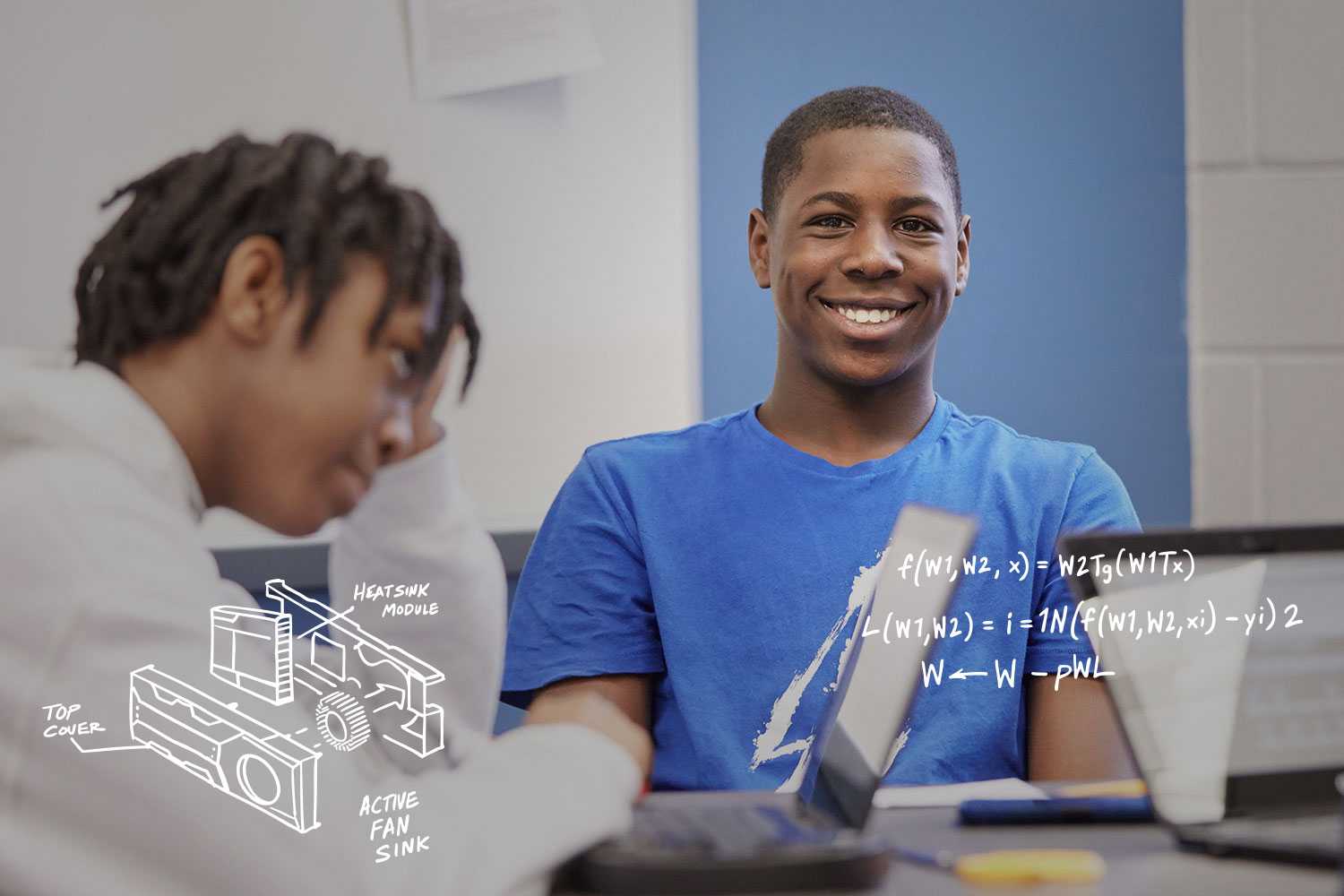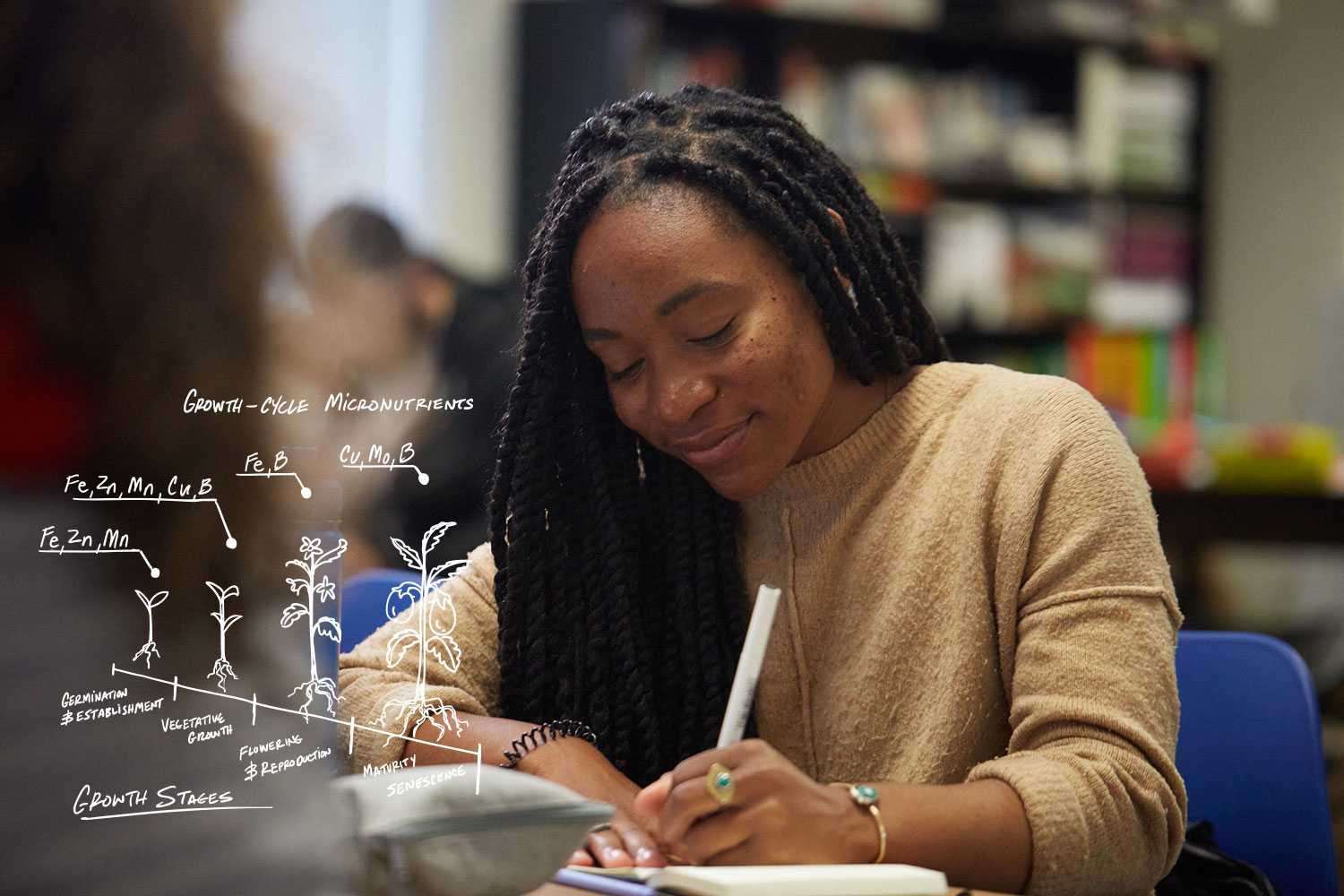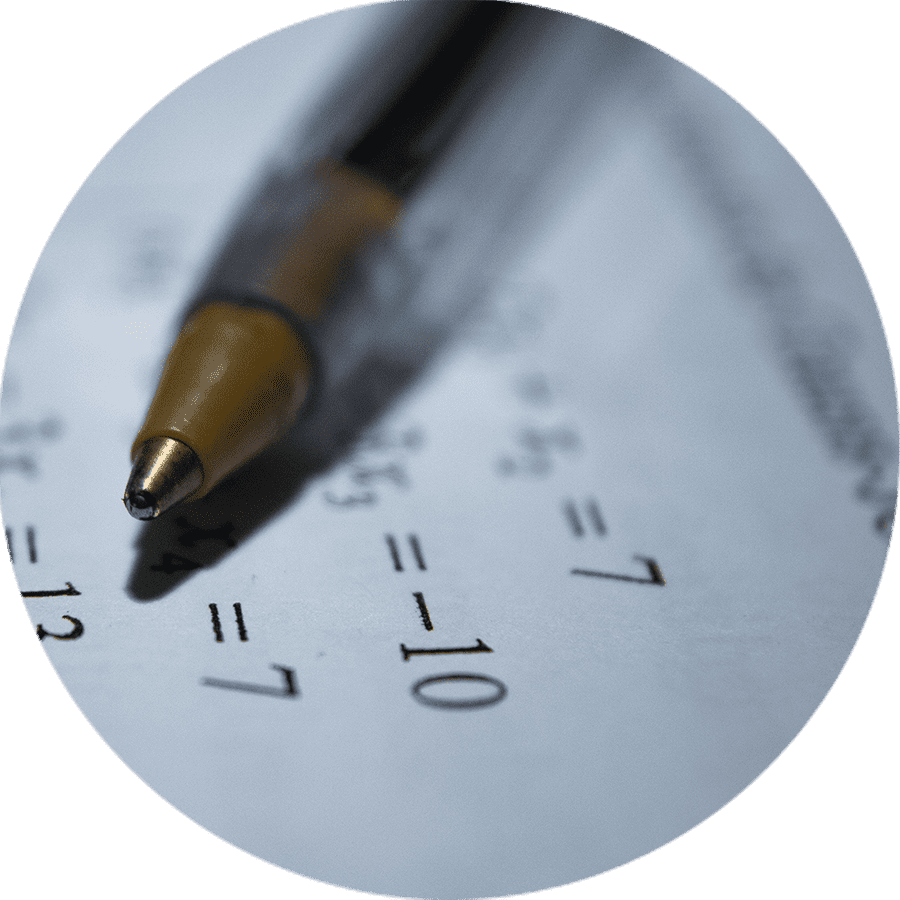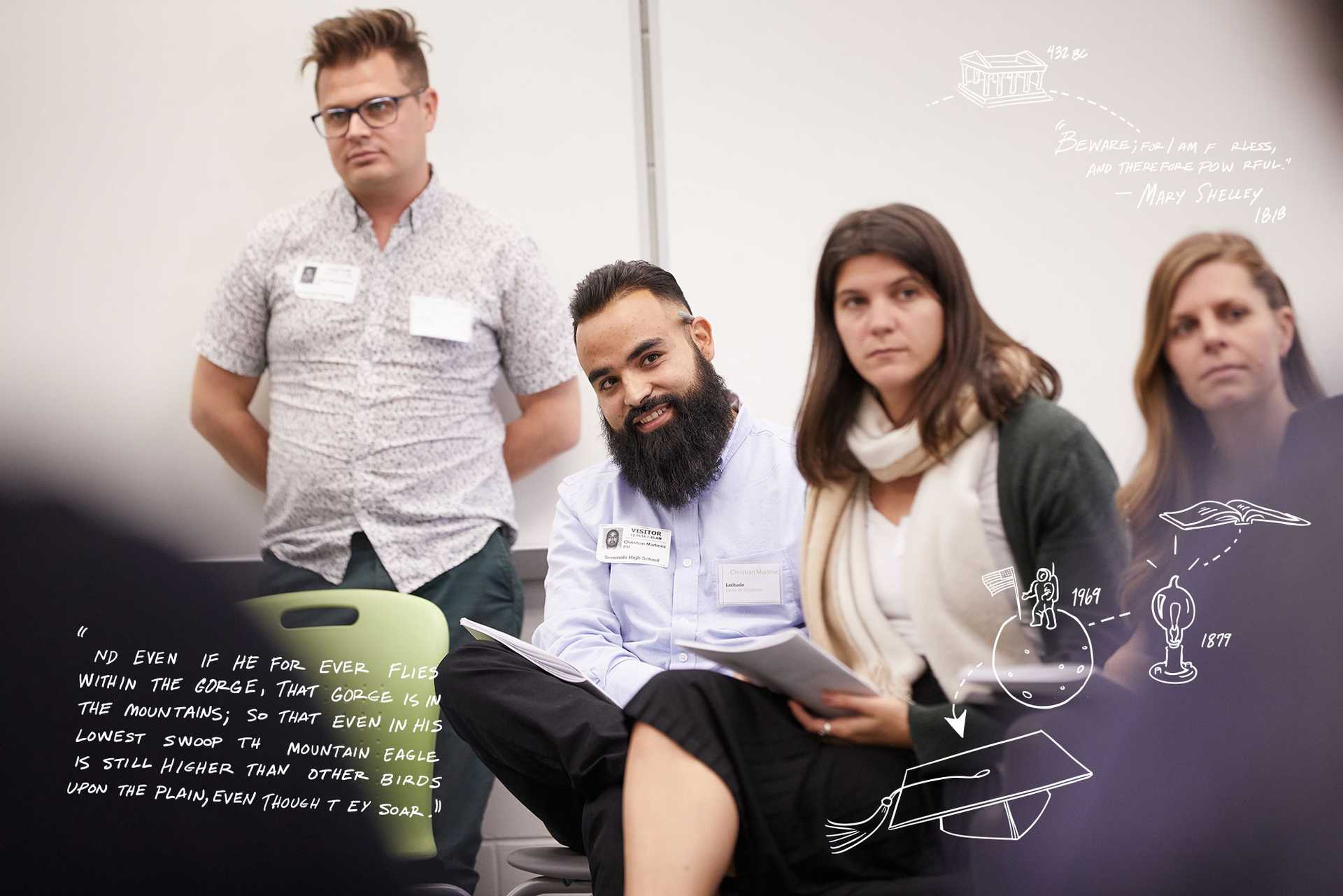3. Effective high schools can help disrupt inequities related to race, ethnicity, and economic status.

Opportunity is still far from equal.
Fact:
59% of high schools that enroll a high percentage of students of color offer no physics courses, compared with 31% of high schools with few students of color.
Source: ExcelinEd analysis of U.S. Department of Education Civil Rights Data Collection
Since its very beginnings, America has struggled to live up to the ideal of equal opportunity for all. We’ve made progress on many fronts, but our children still grow up in very different circumstances depending on race, family income, and zip code.
The gap between rich and poor has been widening since the early 1980s, with families at the top spending more and more on educational experiences like after-school enrichment, private tutoring, music lessons or study abroad, while low-income families struggle even with the costs of housing, food and other basics.
At one in five, the U.S. child poverty rate is higher than in most other developed countries, according to the Organisation for Economic Cooperation and Development. And those rates vary considerably by race, with Black, Latinx, or American Indian children experiencing poverty at two or three times the rates of White or Asian children, according to the latest KIDS COUNT Data Book from the Annie E. Casey Foundation.
Unfortunately, our education system often compounds these inequities by giving poor children and children of color less of the resources we know can make a difference. In many parts of the country, we spend less per student in schools serving high concentrations of low-income students and students of color. On top of that, we often assign those students our least experienced and well-trained teachers. Regardless of prior achievement, they are less likely to be enrolled in the most rigorous high school courses. And when students of color act out in school, they typically get harsher penalties than white students with the exact same infractions. Many respond by dropping out entirely; others keep coming, but gradually disengage.
There’s no doubt that talent and intelligence are evenly distributed. But when we add up the inequities inside and outside schools, it’s no wonder we see very different results among groups of students. On the National Assessment of Educational Progress, for example, almost half of Black and more than a third of American Indian and Latinx 12th graders do not score at even basic levels of reading proficiency, compared with only a fifth of White students. We must do better. And around the country, schools are showing us that, by tackling these problems head on, we really can.


Equity And 21st Century Learning
Dive Deep
![a teacher writing on a chalk board]() The Opportunity Myth
The Opportunity MythResearchers from TNTP observed 1,000 lessons and interviewed 4,000 students to understand why so many students graduate from high school unprepared. Find answers in this report and accompanying resources.
Read More![a student sitting]() Forward Together
Forward TogetherWhat can schools do to close the opportunity gap for the one in five students with learning or attention issues? The National Center for Learning Disabilities teamed up with educators to offer solutions.
Read More![a pen and paper]() The Achievement Gap Fails to Close
The Achievement Gap Fails to CloseOver the past 50 years, achievement gaps have remained mostly unchanged, and gains in eighth grade have not translated into gains at the end of high school. Explore the detailed findings in this 2019 article in Education Next.
Read More![students sitting wearing sneakers]() By the Numbers
By the NumbersA just and equitable nation treats access to high quality education as a civil right. Take a “data walk” with XQ through key indicators of progress and challenges.
Read More
Analyze
To make opportunity real for every student, we need to look holistically at the high school experience and consider how certain policies and practices affect students, both positively and negatively.
Step 1 – Research
Go back to your data sources and see what you can find out about factors such as attendance, school discipline (especially suspensions and expulsions), access to enrichment activities (such as internships), and participation in college-ready exams (SAT, ACT, and AP exams).
Consider the impact on students from different groups. Are some students more likely to get access to positive opportunities? Are some disproportionately affected by disciplinary actions or other negative experiences?
Step 2 – Reflect
Share findings with your team and explore these questions:
- What do the numbers say about how local students experience their high school years? Do you see evidence of disparities? Who can you talk to and what additional information can you explore to understand these patterns more deeply?
- How much do these data tell you about how well students are prepared for the future? Does this information raise concerns about the impact of school closures on some students? What else do you want to learn?




